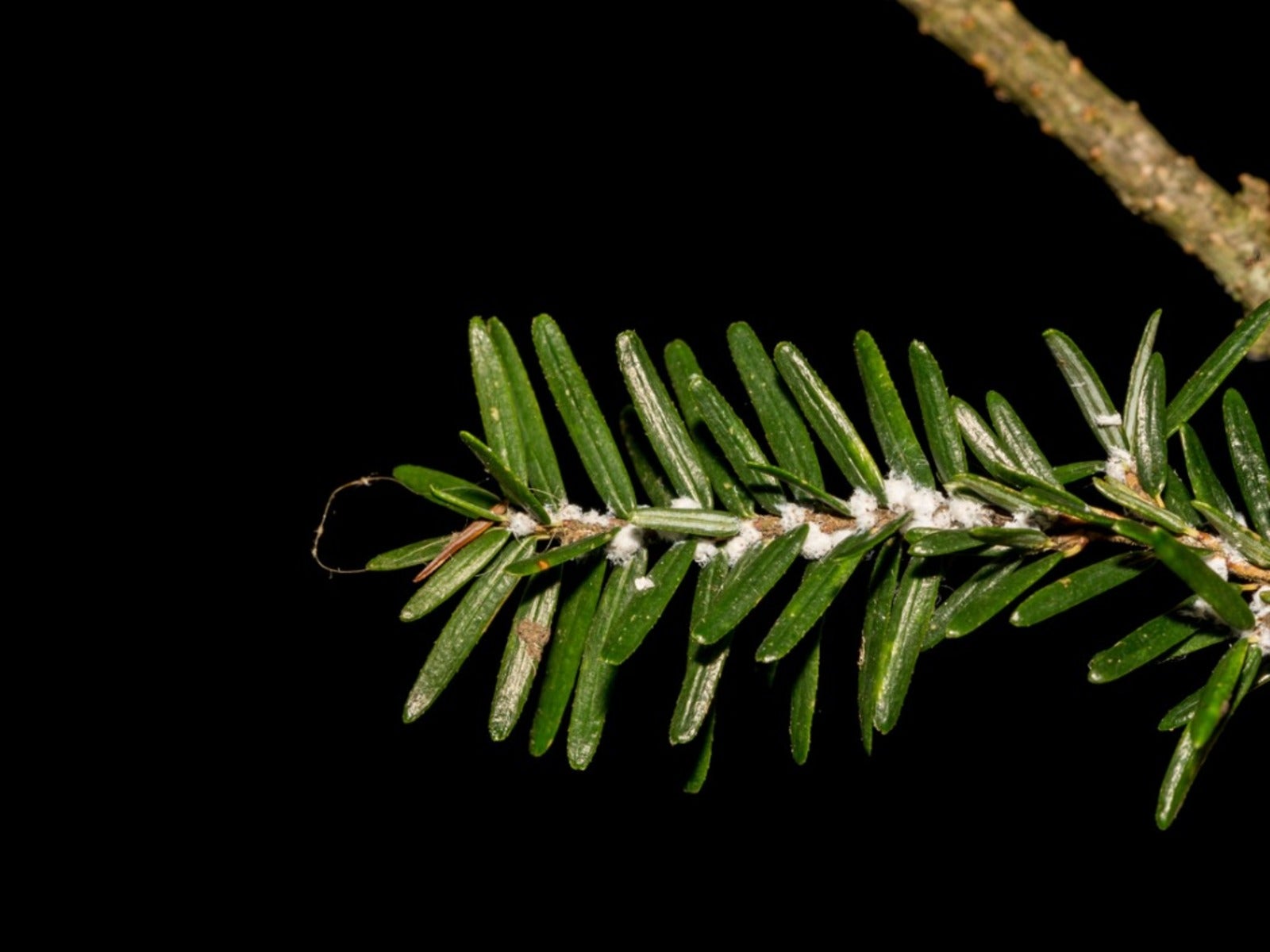What Are Wooly Adelgids: Learn About Hemlock Woolly Adelgid Treatment


Hemlock woolly adelgids are small insects that can seriously damage or even kill hemlock trees. Is your tree at risk? Find out about hemlock woolly adelgid treatment and prevention in this article.
What are Woolly Adelgids?
Only about a sixteenth of an inch (2 mm.) long, woolly adelgids (Adelges tsugae) have a huge impact on hemlock trees in the eastern part of North America. Their feeding practices cause needles and branches to brown and die, and if the infestation is left untreated, the tree starves to death. Here are some interesting facts about these tiny pests:
- All woolly adelgids are female. They reproduce asexually.
- As they feed, they secrete waxy filaments that eventually cover their bodies. These filaments give them their “woolly” appearance. The woolly coat protects the insects and their eggs from predators.
- Woolly adelgids sleep through the summer and are active when temperatures cool.
Hemlock Woolly Adelgid Damage
The woolly adelgid is an aphid-like insect that can grow and reproduce on all types of hemlocks, but only the eastern and Carolina hemlocks decline and die from an infestation. Watch closely for hemlock woolly adelgid damage. Early detection gives your tree a much better chance of survival.
The insects feed by sucking sap from hemlock needles, and the needles die one by one. If nothing is done to stop the infestation, the entire branch may die. Here is a season-by-season list of danger signs:
- In spring, you may see orange-brown eggs when you look closely at the base of the needles.
- In early summer, the eggs hatch and upon close inspection you may be able to see tiny, reddish brown, crawling insects.
- Summer is the easiest time to spot the insects. They go dormant during the heat of summer, but first they spin little white nests of a waxy, wooly-looking substance. The nests are much easier to see than the insects themselves.
- Woolly adelgids come out and begin feeding again in fall and winter.
Woolly Adelgid Control
The best treatment of woolly adelgids on a small tree is to spray the tree with horticultural oils. Spray in spring after the eggs hatch but while the insects are still crawling and follow the label instructions. This method won’t work on large trees. They should be treated with a systemic insecticide by injection or soil treatment. These are short-term solutions.
The treatment must be repeated every year. There are no good organic treatment methods, but scientists are working with some of the woolly adelgid’s natural enemies to see if they can be used to protect hemlock trees.
Sign up for the Gardening Know How newsletter today and receive a free copy of our e-book "How to Grow Delicious Tomatoes".

Jackie Carroll has written over 500 articles for Gardening Know How on a wide range of topics.